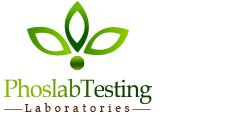According to a report from activist group Environment Florida, several wastewater facilities near the St. Johns River region fell far short of meeting required environmental standards.
Wastewater Report Findings
The report included an analysis of the mill company Georgia-Pacific Corp. The findings reveal traces of suspended solids and fecal bacteria in the river. Traces exceeded the state-level permit limits. The corporation’s discarded wastewater also showed excess toxicity and cloudiness. In all, Georgia-Pacific Corp had exceeded waste thresholds a total of 15 times over a 21-month period starting in January 2016.
Georgia-Pacific Corp isn’t the only violator. Seminole Electric is another company with similar mishandlings of its waste. The same report revealed nine violations over the same period.
A third violator is the Naval Station Mayport, which had about a dozen instances of pollution levels exceeding permitted levels. Waste found near the station included grease, fecal bacteria, and the metals nickel and copper. The waste especially poses dangerous toxicity to a small species of shrimp that inhabits the St. Johns River.
These are just three companies concentrated within a small Florida region. Across the entire state, a total of 270 pollution violations were recorded over the 21-month period.
According to Environment Florida’s state director Jennifer Rubiello, industrial polluters are not being held accountable for their blatant violations, which pose a health risk to all Floridians.
What’s Being Done to Fix the Problem?
Is anything being done to rectify the problem? Georgia-Pacific Corp has acknowledged its shortcomings and vowed to clean up its act. The company’s public affairs manager Terry Hadaway has assured the public that operational changes are in place and that violations will not happen again.
As for Seminole Electric, a representative has yet to address the situation.
What about Naval Station Mayport? Affairs officer Sue Brink attributed its pollution output to the use of peracetic acid for disinfecting wastewater. Brink admitted that the station used more of the compound than was necessary. Furthermore, Brink added that the station previously had severe plumbing issues involving a backed-up grease trap. She did say, though, that all the problems are now being addressed.
Future Implementations
While it looks like overhauls are in place, some feel there needs to be harsher penalties in place. Keep in mind that the St. Johns River is used by the public for recreational activities, including fishing and swimming. When industrial sites put public health at risk, there should be stiff financial consequences, according to many activists.
Visit Environment Florida’s official site for a more detailed report of its findings on the matter.
Water Testing Is a Vital Step
Any Florida company that produces wastewater may be out of compliance and not even realize it. To be sure, submit a sample for waste water testing to Phoslab Testing Laboratories. When runoffs from your facility exceed permissible levels, you not only risk heavy fines and PR issues, but you also endanger the health of your fellow Floridians. Call our expert technicians today and take the first step towards compliance!
Additional Resources:
- Jacksonville, Pollution Persisted at St. Johns River Industrial Sites, Report Says, http://www.jacksonville.com/news/20180329/pollution-persisted-at-st-johns-river-industrial-sites-report-says
- Environment Florida, Worst Polluters of the St. Johns River, https://environmentflorida.org/news/fle/worst-polluters-st-johns-river
